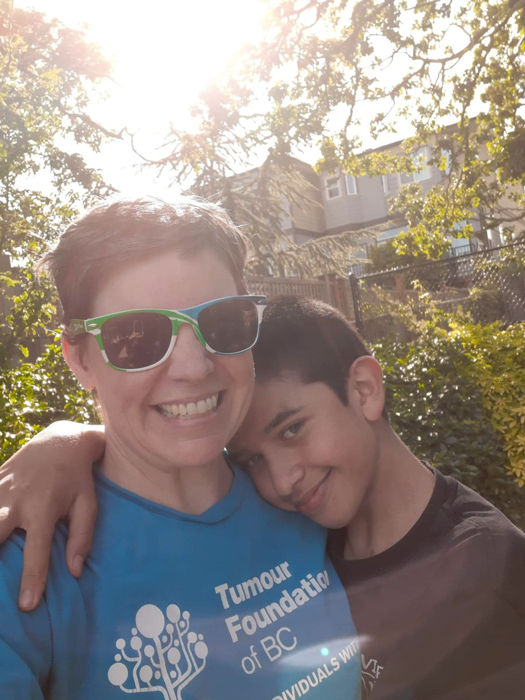In the literal “universe” of uncommon diseases, you can forgive yourself for not being familiar with Neurofibromatosis.
Jill Taylor hopes to change this.
As president of the Tumour Foundation of BC, she wants not only to increase awareness of Neurofibromatosis, often referred to as NF, but help seek expanded support and care for those who have it.
NF often causes painful tumours, that are at first benign, to grow on nerves throughout the body.
It’s a condition her adopted son, Dominick, was diagnosed with as an infant, and now, nearly 14 years later, it’s a condition that still has no cure, few hopes for treatment, and currently no support for those in adulthood.
“It was a total shock. We didn’t know anything about NF,” says Taylor when doctors noticed markings on three-month-old Dominick’s skin.
“They looked like coffee-coloured birthmarks,” Taylor says. “They also found he had Lisch nodules, which are like freckles in his iris, which is another indicator.”
With the diagnosis, Taylor plunged into reading up on NF and became familiar with the disease, which can manifest itself into three, distinct types.
NF1, which Dominick had, is the most common, affecting one in 3,000 people. It is often characterized by multiple café au lait (light brown) skin spots and neurofibromas (small benign growths) on or under the skin and/or freckling in the armpits or groin.
NF2 is slightly less common, affecting one in 25,000, and forms benign tumours on nerves that carry sound and balance information from the inner ear to the brain, leading to partial or complete hearing loss.
And lastly, there is Schwannomatosis, a rarer form of NF, only recently identified, which affects less than one in 40,000 people.
It is usually diagnosed in adulthood and causes the development of benign tumours — called schwannomas — usually on spinal and peripheral nerves.
“There’s not a lot of expertise in B.C. for NF,” Taylor says.
“There are some specialists at BC Children’s Hospital, but once you leave that pediatric care, there’s really nobody. And that’s a terrifying prospect because you are not being monitored for all of the possible complications that might arise later in life.”
The Tumour Foundation of BC has been hoping a clinic can be established in B.C. to support those with NF, “But you really need a doctor who is willing to lead that charge. And we don’t have one,” Taylor says.
In the meantime, the foundation is working to build a partnership with a clinic in another province and acts as a support and educational organization for those with NF and their families.
For more information about NF, visit the Tumour Foundation of BC website at tumourfoundation.ca



